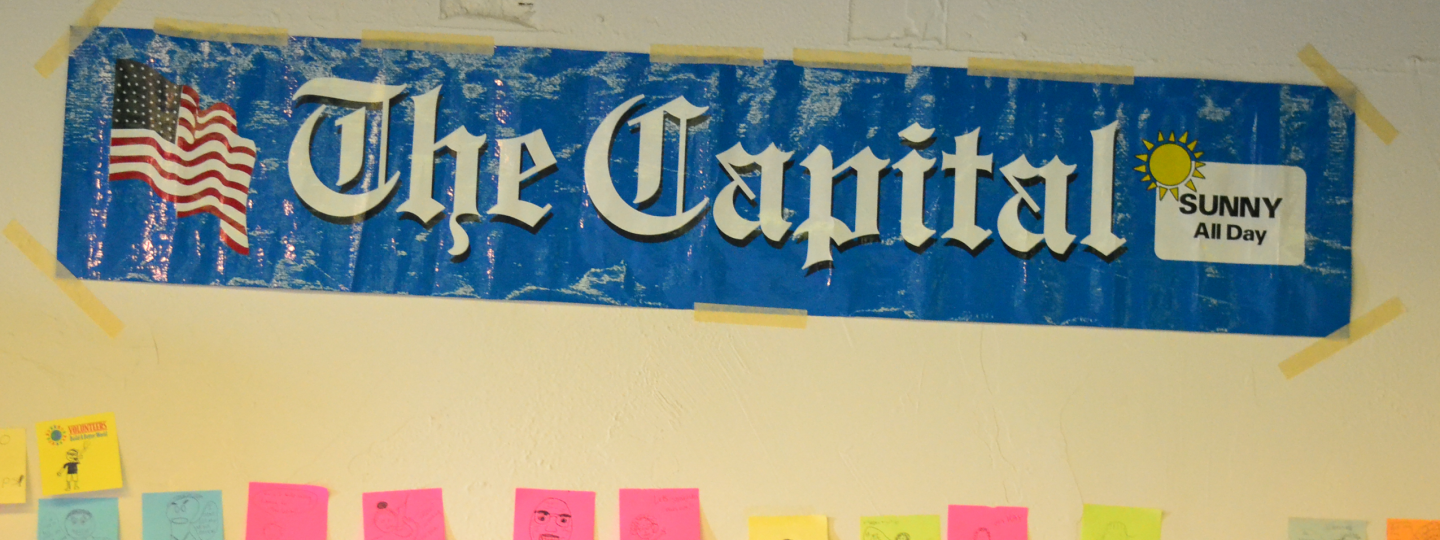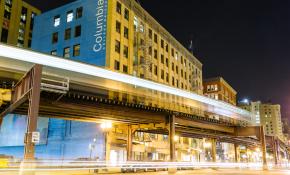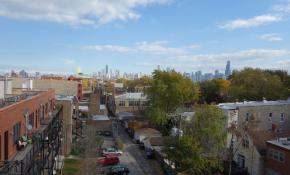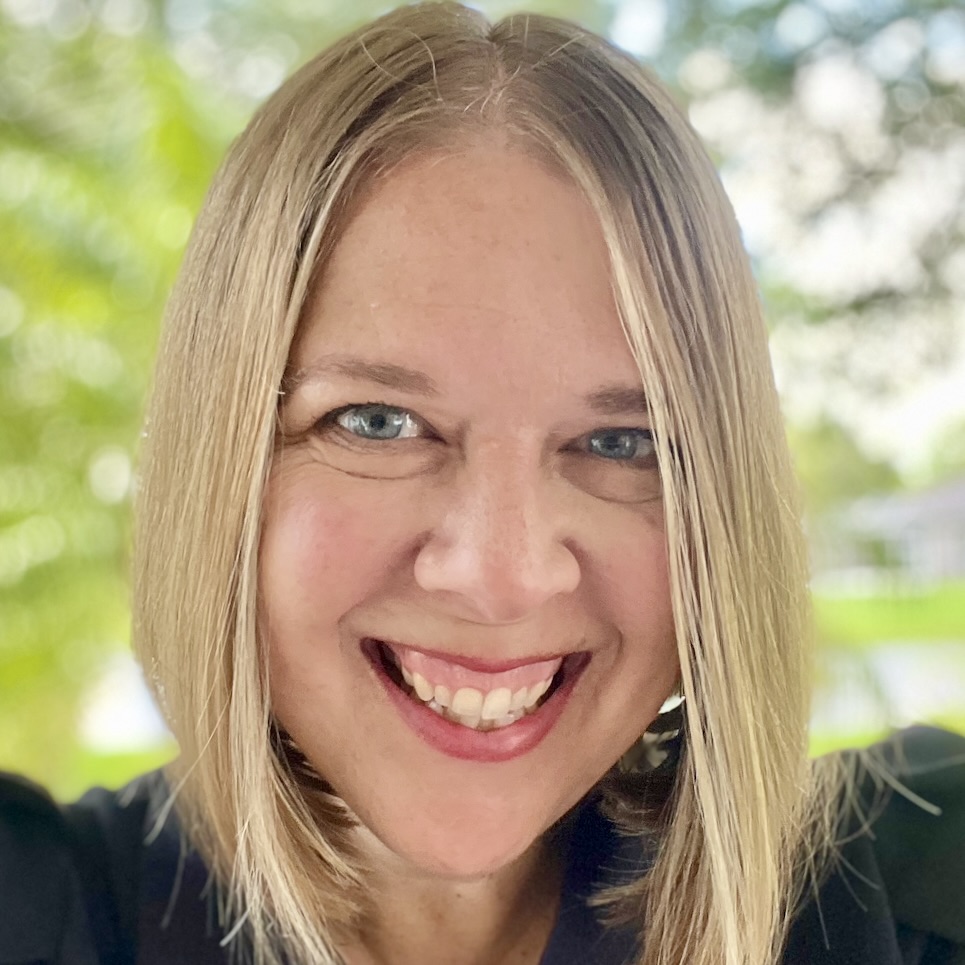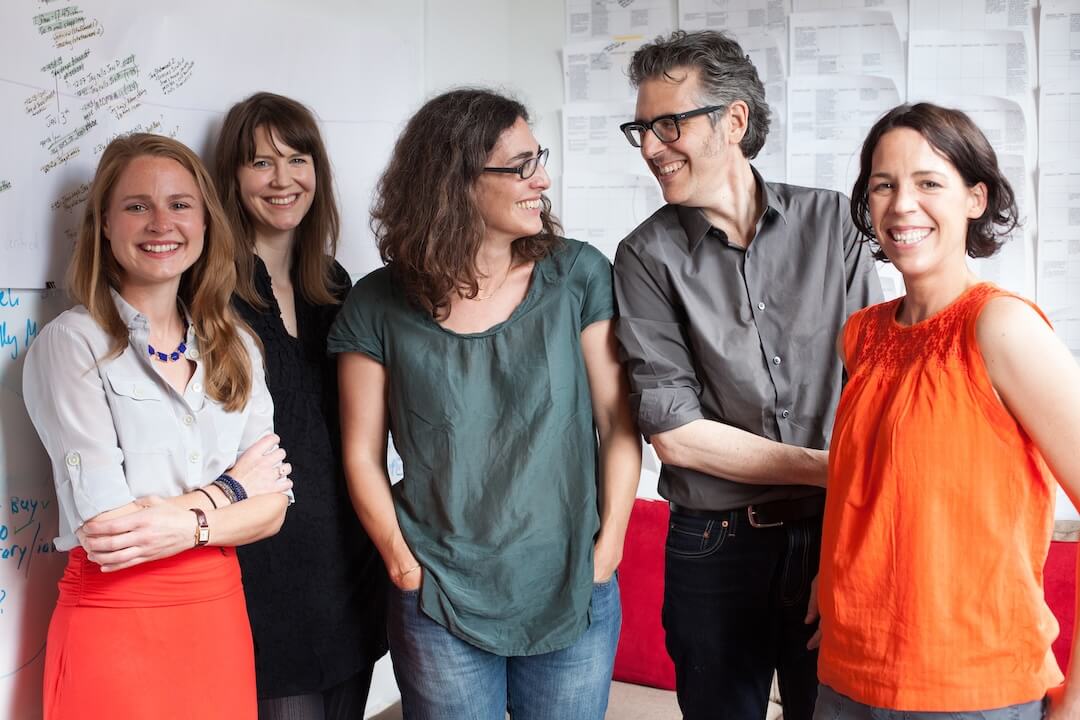The temporary newsroom is smaller than the old one. Everyone sits closer together at a maze of gray desks under fluorescent lights. They shout across the room to each other and call for quiet before picking up their phones for an interview.
You can hear the staff of Annapolis’ Capital Gazette working here, said Danielle Ohl, a reporter who covers city hall and the Naval Academy. They type. They talk. They make each other coffee.
“This sounds so stupid,” she said, “but it’s so comforting for people to step out of the kitchen area and be like, ‘I’m going to make a pot, will everyone drink it?’”
After the devastation of losing five coworkers when a gunman broke into the newsroom on June 28, after feeling listless and directionless, it’s heartening to Ohl to see her colleagues at work.
Already, papers and empty water bottles pile up. Laptops sit open in front of desktops. Staff here work to cover their city and to recover from the attack.
This office space is not their newsroom. But they’ve made it one, at least for now.
BEFORE/AFTER
On days when she comes in, features reporter Selene San Felice sits near the back.
Like Ohl, she’s been here since the fall of 2017. And like Ohl, she was hired by Rob Hiaasen and editor Rick Hutzell to work at The Capital. (The Capital and The Gazette are separate print publications, but they share a space online.) Both young reporters describe the newsroom before the shooting in similar ways.
Before, it was a good local paper, one with a significantly smaller staff than it once had, where young reporters got both freedom and mentorship, where everyone in the city knew everyone on the staff.
“We were just so close,” San Felice said. “And even if you weren’t particularly close with someone, you were close to them.”
She’d only just started getting to know Gerald Fischman, but he sat in the same corner as her editor, Hiaasen, and she’d often sit there with him and talk.
Before, Hiaasen had this way of making everyone feel like his favorite. Wendi Winters treated her colleagues like family and kept a candy bowl on her desk full of everyone’s favorites. Rebecca Smith was the first face most people saw when they came into the building. She was lovely, San Felice said, and always did more than she was asked, ordering coffee and notebooks and worrying when they didn’t come on time. Fischman, who mostly kept to himself, had a dry sense of humor and often surprised San Felice with on-point comments. John McNamara, a sports reporter at heart, could commiserate with reporters about newsroom and industry troubles and wasn’t afraid to ask his younger colleagues for help.
They were the core of the paper, San Felice said.
During the attack, she hid under a desk. Ohl, who was on vacation in North Carolina, saw messages on Slack from an editor who was also out of town, desperate to reach the newsroom.
After, they’ve been to memorial services and funerals. They marched in the Fourth of July parade. They’ve been the story on television, in print and online. They put out the damn paper, and they haven’t stopped.
After, they’re closer with staff at the Baltimore Sun and with colleagues the newsroom staff didn’t know so well.
Last week, after meeting with her new editor for the first time, San Felice sat in the hall and cried. He’s great, she said, but he’s not Hiaasen, a mentor to many journalists.
As San Felice sat there, a woman from advertising came out into the hallway, sat down, combed San Felice’s hair and talked about surviving cancer the year before.
“And I had no idea.”
And after, they all work in this temporary space in a location they’re not sharing out of concerns for their safety.
BECOMING THE STORY
For days, reporters came to San Felice’s house seeking comment. Journalists she didn’t know sent flowers. It was a kind gesture, but one she suspected as a gimmick to get access.
Being on that side of the door, that end of the phone, that part of the process, has shown her things she didn’t get before.
Since Tina Frost was injured in the mass shooting in Las Vegas, San Felice has reported the story of the Maryland woman’s recovery. San Felice worked through a family friend who was designated as the spokeswoman.
In May, San Felice reached out to Frost’s mom directly for a follow-up. The family spokeswoman responded, and she was upset.
After surviving the newsroom attack and the push of the press, San Felice messaged that spokeswoman again.
“I said, ‘I know what it feels like.’”
She’d thought Frost’s story was one of physical recovery and hope. She now realizes there’s a lot more, and recovery can be a complicated, lifelong process, made all the more difficult when it’s public.
The family spokeswoman hasn’t responded to that message.
“But she doesn’t owe me that.”
In the back of the new newsroom, a cardboard box sits near San Felice’s new desk. Inside are things from her old desk, including handwritten notes and emails from Hiaasen.
She hasn’t been able to unpack it yet.
TELLING THE STORY
Last week, Ohl tried to get back into a somewhat normal routine at work with a story that showed her just how tangled up that normal now is: The mayor is holding a benefit concert on behalf of the Capital Gazette.
She’s learning to hopscotch between reporter and community member, storyteller and source.
Just after the attack, Ohl found that everyone she came across offered hugs, including her own sources.
“For me, it was tough to figure out when to be a person who was affected by this and when to be a reporter. And I’m still working on that,” she said. “It’s not something that anybody has a playbook for.”
While covering a recent meeting at city hall, Ohl started to write rules of her own.
“I said ‘I’m going to have to insist that you shake my hand, that we don’t hug, because we’re back to business. I’m here on business. I’m here as a reporter.’”
CONTINUING THEIR MISSION
Journalists from The Wall Street Journal, The New York Times and the Boston Globe reached out with offers of help. They checked in from newsrooms in Orlando, Allentown and Chicago. Former staffers wanted to help. Retirees wanted to get back to work.
Andrew Green, opinion editor at the Baltimore Sun, is managing all that help. Mostly, he’s sending people to Annapolis who are either former staffers or journalists at the Sun.
People in that newsroom experienced trauma, and they’re trying to minimize the number of new faces there, Green said. The Capital is also a community newspaper, and they need people that know that city and how it works.
Several organizations put out calls for help for the Capital Gazette, including Investigative Reporters and Editors, ASNE/APME and the National Press Club. People have been so generous, Green said. IRE alone heard from 380 people in 24 hours.
“If you signed up and I don’t get back to you, I apologize,” Green said. “The response is incredibly overwhelming.”
The journalists who are helping out and don’t have a history with The Capital, the Sun or the region are, for the most part, filling in at the Sun so journalists in Baltimore can work in Annapolis.
And, just to be clear, no one is volunteering. Either their own newsrooms are paying them and loaning them, Green said, or in a few cases, the Sun is paying them directly.
The Sunday after the attack, The Virginian Pilot’s Carl Fincke made the drive to Baltimore and spent two weeks helping out at the Sun as journalists there headed to Annapolis.
“Everybody just put their heads down and they were just working so hard,” he said.
Journalists often support each other in tough times with food. After the shooting, nearby communities did that for more than 25 local newsrooms.
But the way journalists — both local and national, with connections to Annapolis and without them — have reached out and pitched in says something, Green thought.
Everyone shares that newsroom’s determination to keep putting out the newspaper and to fulfill its mission to cover the community.
Regardless of what kind of newsroom you work in, he said, “we all see our role in very much the same way.”
The response is a bright spot, Fincke agreed, in an industry that doesn’t get much good news anymore.
NOT OVER
When she left the newsroom after the attack, San Felice thought the paper was done.
“It isn’t,” she said. “But that doesn’t mean this is over.”
Last week, Anne Arundel County prosecutors charged the alleged shooter with 23 counts, including five counts of first-degree murder. Baltimore Sun reporter Ian Duncan reported that the suspect’s first court date is July 30.
Capital Gazette reporters are among those covering that story.
The focus, so far, has been about how much they’ve lost, Ohl said. And she doesn’t want people to stop talking about that.
“I want people to remember Rob, Rebecca, John, Gerald and Wendi. But I also want people to know that we are still here. There are people who survived, that are doing that work.”
Local newsrooms face and have folded under so many challenges right now, Ohl said. This is a different kind of adversity.
“But at least for now, we are here. We’re still mourning. We’re gonna need help. But we’re still here.”
One sign of that is a banner hanging on one wall in the new space. In white letters, on a bright blue background, it reads “The Capital.” There’s an American flag, mid-wave, on one side. On the other is a weather update that reads “Sunny all day.”
It’s fixed there with strips of masking tape, temporary, like this space, but present and persisting, like this newsroom.
“Even though it’s not our space,” Ohl said, “we still have our name on the wall.”
More than $600,000 has been raised to help family and staff
On the day of the shooting, Madi Alexander, a journalist at Bloomberg Government, started a GoFundMe to support the newsroom. Most of the more than $200,000 raised has already been withdrawn and put into The Capital Gazette Families Fund, Alexander told Poynter in an email.
That fund, established by the Capital Gazette’s owner Tronc, has raised more than $600,000 so far, Amy Francis, development director at the Community Foundation of Anne Arundel County, told Poynter in an email.
The fund “will provide immediate relief and long-term recovery support to employees and immediate family members of employees of the Capital Gazette, as well as employees across the company,” she said.
More than $130,000 has also been raised for The Capital Gazette Memorial Scholarship Fund, Francis said, and will go annually to students studying journalism at the University of Maryland, College Park.

